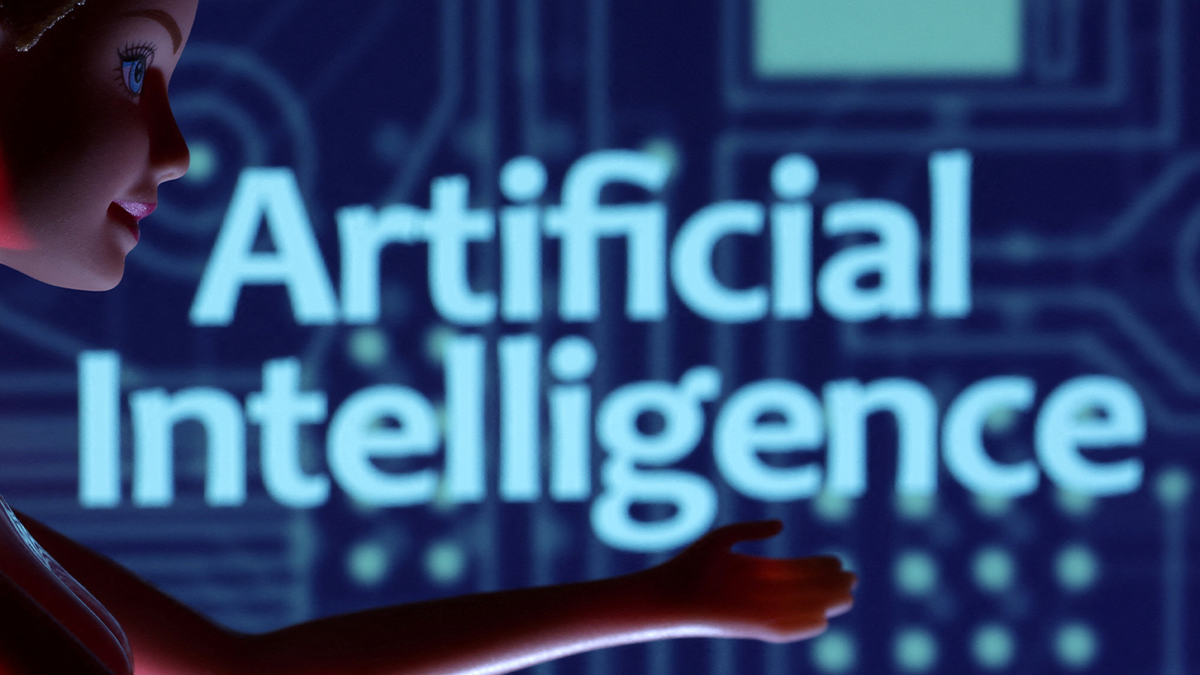Study finds many researchers believe AI could cause nuclear-level catastrophe: Russell Wald
Russell Wald, director of the Stanford Institute for Human-Centered AI, sounds off on 'The Story.'
Over the last few years, the rapid development of artificial intelligence has taken the world by storm as many experts believe machine learning technology will fundamentally alter the way of life for all humans.
The general idea of artificial intelligence is that it represents the ability to mimic human consciousness and therefore can complete tasks that only humans can do. Artificial intelligence has various uses, such as making the most optimal decisions in a chess match, driving a family of four across the United States, or writing a 3,000 world essay for a college student.
Read below to understand the concepts and abilities of the four categories of artificial intelligence.
- Reactive machines
- Limited memory
- Theory of mind
- Self-awareness
1. Reactive machines
The most basic form of artificial intelligence is reactive machines, which react to an input with a simplistic output programmed into the machine. In this form of AI, the program does not actually learn a new concept or have the ability to make predictions based on a dataset. During this first stage of AI, reactive machines do not store inputs and, therefore, cannot use past decisions to inform current ones.

The simplest type of artificial intelligence is seen in reactive machines, which were used in the late 1990s to defeat the world's best chess players. (REUTERS/Dado Ruvic/Illustration)
Reactive machines best exemplify the earliest form of artificial intelligence. Reactive machines were capable of beating the world's best chess players in the late 1990s by making the most optimal decisions based on their opponent's moves. The world was shocked when IBM's chess player, Deep Blue, defeated chess grandmaster Guy Kasparov during their rematch in 1997.
Reactive machines have the ability to generate thousands of different possibilities in the present based on input; however, the AI ignores all other forms of data in the present moment, and no actual learning occurs. Regardless, this programming led the way to machine-learning computing and introduced the unique power of artificial intelligence to the public for the first time.
2. Limited memory
Limited memory further expanded the complexity and abilities of machine learning computing. This form of artificial intelligence understands the concept of storing previous data and using it to make accurate predictions for the future. Through a series of trial and error efforts, limited memory allows the program to perfect tasks typically completed by humans, such as driving a car.
AI COULD GO 'TERMINATOR,' GAIN UPPER HAND OVER HUMANS IN DARWINIAN RULES OF EVOLUTION, REPORT WARNS
Limited memory AI is trained by scientists to memorize a data set before an environment is built in which it has the ability to correct mistakes and have approved behaviors reinforced. The AI then perfects its ability to complete the task during the training phase by receiving feedback from either human or environmental stimuli. That feedback is then reviewed and used to make better decisions in the future.

Elon Musk is the founder and CEO of Tesla, a leading self-driving vehicles company. (AP Photo/Susan Walsh, File)
A perfect example of limited memory artificial intelligence is self-driving cars. The model examines the speed and direction of other cars in the present moment to make the best decisions on the road. The training phase of self-driving cars also considers traffic lights, road structures, lane markings, and how human drivers act on the road. Companies like Tesla are leading the way in producing and wide-scale marketing of AI-controlled self-driving vehicles.
3. Theory of mind
Theory of mind AI systems are still being researched and developed by computer scientists and may represent the future of machine learning. The general concept of the theory of mind is that an AI system will be able to react in real time to the emotions and mental characteristics of the human entity it encounters. Scientists hope that AI can complete these tasks by understanding the emotions, beliefs, thinking, and needs of individual humans.
This future AI system will need to have the ability to look past the data and understand that humans often make decisions not based on purely sound logic or fact but rather based on the mental state of their mind and overall emotions. Therefore, machine learning will need to adjust their decisions and behavior according to the mental state of humans.
GOOGLE SCRAMBLES FOR NEW SEARCH ENGINE AS AI CREEPS IN: REPORT

The development of self-aware artificial intelligence is not possible with today's technology but would represent a massive achievement for machine learning science. (Cyberguy.com)
While this is not possible at the moment, if the theory of the mind ever becomes a reality, it would be one of the greatest developments in artificial intelligence computing in decades.
4. Self-awareness
The final stage of the development of artificial intelligence is when the machine has the ability to become self-aware and form its own identity. This form of AI is not at all possible today but has been used in science fiction media for decades to scare and intrigue the public. In order for self-aware AI to become possible, scientists will need to find a way to replicate consciousness into a machine.
ARTIFICIAL INTELLIGENCE QUIZ! HOW WELL DO YOU KNOW AI?
The ability to map human consciousness is a goal far beyond simply plugging inputs into an AI program or using a dataset to predict future outcomes. It represents the pinnacle of machine learning technology and may fundamentally shift how humans interact with themselves and the world.
The stages of AI (ANI, AGI, ASI)
Artificial narrow intelligence, or ANI, is the simplest form of AI, but also one of the most common types of machine learning in the daily lives of individuals across the world. Narrow intelligence machines are based on a learning algorithm that is designed to complete one singular task successfully and will not store information to complete different tasks. Tasks where narrow intelligence generally succeeds include language translation and image recognition. Products such as Apple's Siri and Amazon's Alex are examples of ANI.
Artificial general intelligence, or AGI, describes a form of machine learning that simulates human cognitive systems by completing different takes. This form of AI is able to store information while completing and use that data to perfect its performance in future tasks. However, AGI is only a hypothetical form of AI and has not yet been invented. The ultimate goal of AGI would be to surpass human capabilities in completing complex tasks.
CLICK HERE TO GET THE FOX NEWS APP
Artificial super intelligence is another example of AI that has not yet been invented but is rather a concept that describes the most advanced form of machine learning. ASI is a concept that envisions a future in which computer programs will be able to simulate human thought and evolve beyond human cognitive abilities. This stage of AI is considered science fiction, but could be possible decades from now, depending on how advance AI becomes.

